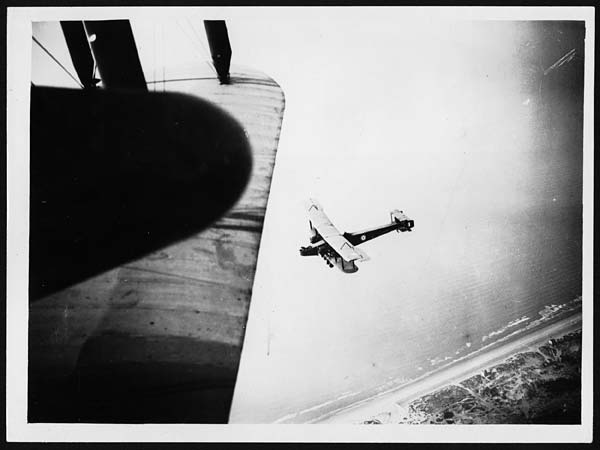Handley Page Bomber
The Handley Page O/100 and O/400 bombers were the only specific bomber planes used by Britain during World War One, and it was the largest plane in the UK at the time.
The idea that a long-range bomber was first floated by head of the Air Department at the Admiralty - Captain Murray Sueter - in December 1914. Sueter stated that he wanted a bomber able to ‘paralyse the Germans’, and it was left up to aircraft designer Frederick Handley Page to take up this challenge.
The brief from the Royal Navy was a difficult one, calling for an aircraft that could provide a defence at coastal and port locations while also being able to bomb Kiel, the heart of the German Navy and home to the German High Seas Fleet.
The first prototype designed by Handley Page was flown on 17th December 1915 by Lieutenant Commander John Babington. It was fitted with additional protection around the cockpit compared to other aircraft but this increased the weight. Unable to develop a more powerful engine in time, the plane had to have its additional plating removed, which left the crew more vulnerable to gunfire. This plane became the basis for the first version of the Handley Page bomber - the O/100.
When the Royal Navy established a training school, it became the first to fly the O/100. It went on to order 28 for the Royal Naval Air Service. The Royal Flying Corps then decided the aircraft must be a valuable addition to the British aerial industry and so ordered 12.

The first Handley Page 0/100 bombers came into service in late 1916, with the Royal Naval Air Service (RNAS) the first to use them at their base in Dunkirk, France. The planes were used for night-time raids as they were vulnerable to attacks during the day, particularly when it came to German fighers such as the Albatros or Fokker.
Initially the planes were flown individually and tasked with small bombing missions. However, as aircrews became more experienced flying the large planes they were allowed to take part in larger bombing raids, which eventually continued up to 40 bombers.
Sadly, one bomber actually made it into the hands of the Germans through nothing more than a mistake. On 1st January 1917, a O/100 was flown to France to begin its operation but mistakenly landed 12 miles behind enemy lines. One of the German pilots who examined the prize was Manfred von Richthofen, flying ace. The plane was soon painted in the colours of the Imperial German Army Air Service.
From September 1917, the second version of the Handley Page bomber - O/400 - was first flown. Featuring more powerful engines, a larger fuel take and space for more bombs, the plane was favoured by many and more than 400 had been ordered by the War Office by the time the war ended in November 1918.
The O/400 boasted a top speed of 97 mph and a range of 600 miles thanks to its two Rolls-Royce engines, and it was also capable of spending eight hours in the air. It could also carry 2,000 Ibs of bombs, which were carried in the fuselage. Additionally, it had space for a single 1,650 Ib bomb, which was the largest that the military had during the First World War.
To ensure accurate bomb delivery, the O/400 was fitted with an early bomb aimer - the Drift Sight Mark 1A - and it also had five Lewis machine guns fitted on the front, rear and sides to provide the crew with multiple options when it came to defence.
As with its predecessor, the O/400 could be flown with up to 40 in the air at once, and such a raid took place between 14th and 15th September 1917 in the Saar region of Germany. The Handley Page saw great success in this and many other campaigns, aided by the blockade of Germany that was preventing the German Air Force from flying all their fighter planes. As a result, Moree fighter planes were available to the British military and could support the bombers as they carried out their missions.
The Handley Page bomber remained in use by the Royal Air Force until the Vickers Vimy bomber replaced it after the war.
MLA Citation/Reference
"Handley Page Bomber". HistoryLearning.com. 2025. Web.
